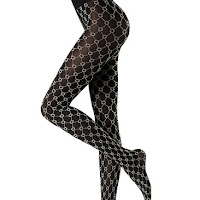Admit it: Finding a pair of tights that doesn't drive you crazy can be difficult. After years of testing tights, both in the Good Housekeeping Textiles Lab and on real women testers, we have seen and heard about all sorts of pantyhose issues. And while you may not believe it, some smarter shopping moves can help you avoid some of the biggest headaches.
Problem #1: Your waistband rolls down.
If you struggle with a waistband that just won't stay up, chances are you bought the wrong size. While the sizing chart on the packaging is a good way to estimate, they don't always take into account different body shapes.
The fix: If waistband rolling is a problem for you or if you're on the border between two different sizes, it's best to size up.
Problem #2: You're always getting snags, runs, and holes.
We've all been there: You put on a pair of new tights only to notice an aggravating rip hours later — or maybe even before you get them on completely.
The fix: A thick pair of tights is much sturdier than a sheer pair. Look for a pair with 90% nylon or more, and this might be obvious, but always use caution when putting on and wearing tights. Remove jewelry with sharp edges and make sure your hands and nails are smooth before handling your tights. When wearing, try to avoid rough surfaces. (Tights worse enemy? Velcro.)
Problem #3: Your legs are always freezing.
As soon as the temperatures drop, many of us reach for hosiery because it's just too cold to go bare-legged in dresses and skirts. Unfortunately, some flimsy pairs might not keep you warm at all.
The fix: If you're going to be outside in winter's elements, fleece-lined tights provide extra warmth and are gaining popularity — you can usually find them wherever you'd normally buy tights — and they aren't much more expensive. We like the Cozy Hose Tights from Berkshire ($14, essentialapparel.com).
Problem #4: You can't find the right opacity.
When tights are in their packaging, it's not always easy to picture how they'll look on your legs. Sometimes you'll find they end up too sheer and other times too opaque.
The fix: The denier of the tights, which is often listed on the packaging and indicates a fabric's weight, lets you know how thick they'll be: The higher the denier, the more opaque the tights. Generally, anything under 30 denier is sheer, between 30 and 70 denier is opaque, and over 70 denier is super opaque.
Problem #5: You don't know which way is front.
Believe it or not, one of the biggest complaints we have from consumer testers is not being able to distinguish the front from the back on a pair of tights.
The fix: When there isn't a tag to indicate the front, the first step is to check the shape of the foot. If that's not clear, look to see if there's a long seam that sticks out higher in the back of the waistband, which indicates that it's the back. If you still can't tell, it means there's no difference and the tights can be worn either way.
TELL US: What are your biggest complains about tights?



























.jpg)












0 comments